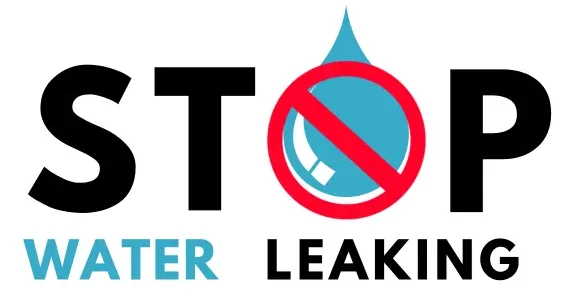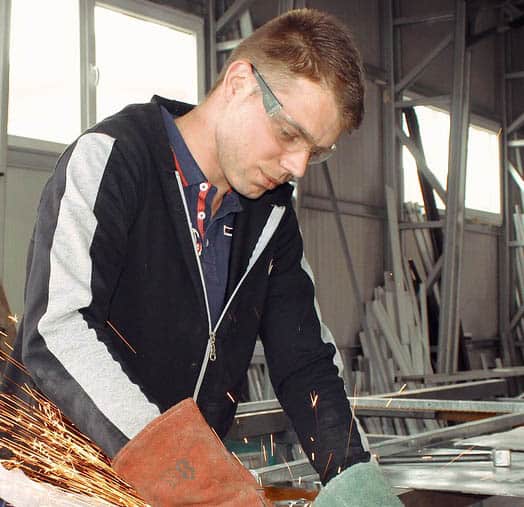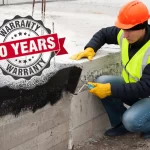Wood is an invaluable resource on earth. I think you may have seen it when the wood is directly open to the water. It can be decay, swelling, and buckling. To protect the wood from the water, it should be waterproof. There are so many ways to waterproof the woods. Here we can describe the wood waterproofing in detail.
For wood waterproofing, you should follow these steps in-depth to protect decks, balconies, roofs, walls, furniture, and many more. Wood waterproofing and preservation methods should not harm natural elegance and other characteristics.
The below steps will lead you to protect your wood with durability and elegance in detail.
Step 01. Prepare the Wood Surface
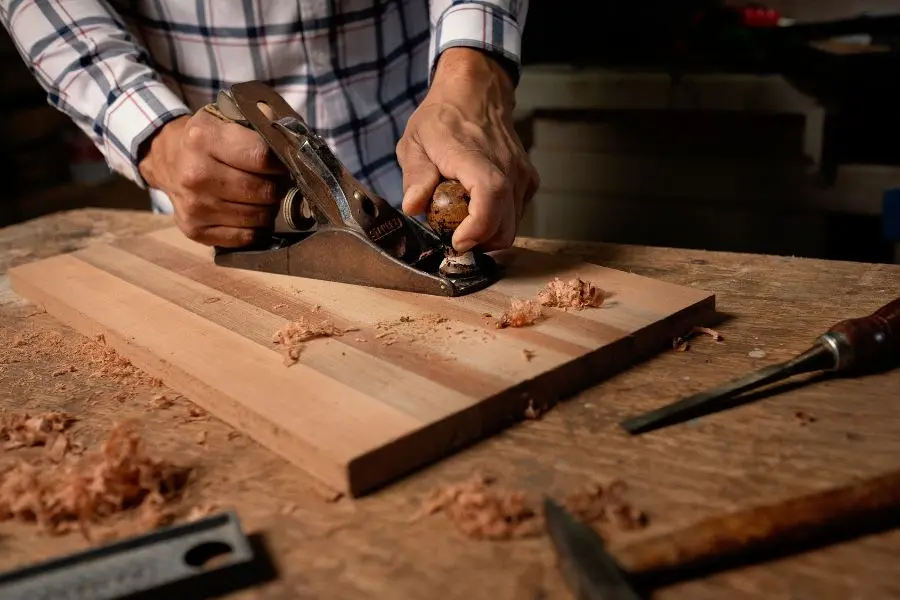
Wood is used for decks, balconies, furniture, outdoor platforms, roofs, doors, windows, etc. The surface of the timber can be varied according to the usage. Mainly we can categorize. Newly constructed wood surface and old surface.
You can waterproof the balcony using this guide easily.
For Older Surface
- Remove the old applied layer with sanding.
- Remove the loosened areas with suitable equipment.
- Filled with Wood wax which is mostly water resistant.
- Use 400 grit sandpaper to smooth the surface.
- Clean the surface by removing the dust
For Newer Wood Surface
- Filled with wood wax if there is any cavity. (cavity should be well cleared)
- Use 400 grit sandpaper to smooth the surface.
- Clean the surface by removing the dust
PRO TIPS
- Always try to maintain a small angle to remove the water
- Wood joints should be filled with wax
- Maintain the joint at the same level. (not with a gap)
- Embed the steel nails into the wood
Step 02. Select the Waterproofing Product
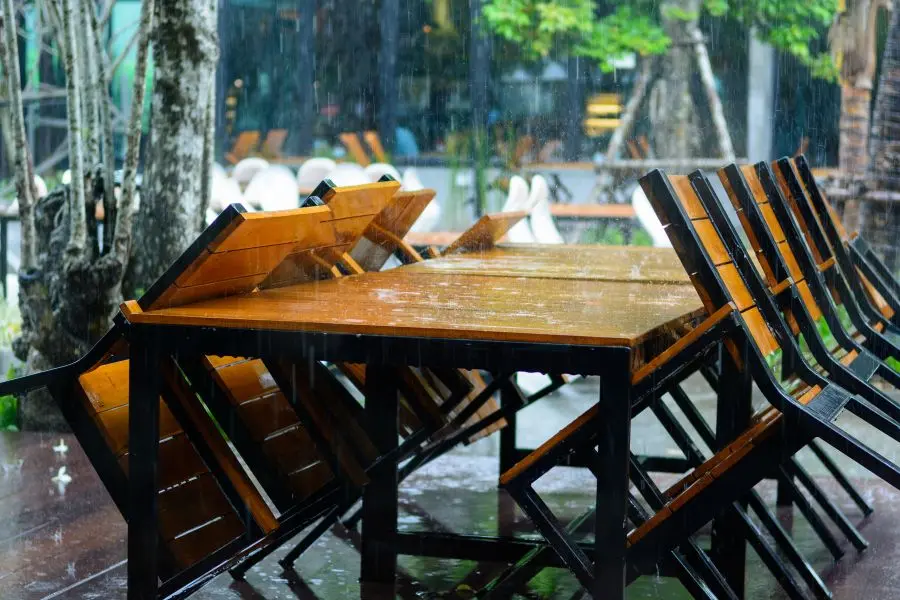
After the surface is being finished, you should find the products for the wood waterproofing. There are dozens of products available in the market. But which one is the most suitable for your task. Before you select the product, don’t forget to consider the below factors.
- Environmental condition – A regular environmental condition that your platform is subjected to
- Usage – What purpose do your platform is used for.
- Durability – How long do you need to be long-lasting?
- Cost of the product
Types of Waterproofing Products for Wood.
- Using Oils for Waterproofing the Wood
Oils will not cover the whole area of the woods. And it will penetrate inside the woods. So it will act as a covered area. But can be sure, will it penetrate the water. Therefore oil treatments for waterproofing are perfect for inside protection.
- You can use mainly walnut, tung oil, and linseed oil for the wood waterproofing.
- Tung oil is typically found as a mix in most commercial products.
- Linseed oil is extracted from the flax-seed. It is one of the most useful natural oils. linseed oil dries slowly and shrinks little upon hardening. Linseed oil will not cover the surface as varnish does, but soaks into the (visible and microscopic) pores, leaving a shiny but not glossy surface that shows off the grain of the wood.
- Walnut oil is very good for furniture and other interior product waterproofing.
- Apply the Wood Coatings
Applying wood coating is another way to protect the wood from water. Polyurethane, varnish, and lacquer are the commonly used products for wood coating. These are made with chemicals and need a proper ventilation area for application.
Varnish
This is a common way that we have already heard about this. Varnish is neither paint or stains. You can use turpentine for the solvent, and varnish is a resin that covers the wood top. You can use both indoor and outdoor for the varnish.
There are products like “Marine varnish” that will protect the wood from the sunlight and UV lights. Hence it is perfect for Exterior platforms. There are types of varnish I have lin up and summarized its purpose. Check the below.
Resin – Derived from plants or insects, mainly used for musical instrument waterproofing. You can use Epoxy as a waterproofing material on the wood.
Shellac – This is not a waterproofing compound. Not suitable for outdoor usage
Alkyd – Alkyds have a good solvent, moisture, and UV light resistance. Alkyds are chemically modified vegetable oils that operate well in a wide range of conditions and can be engineered to speed up the cure rate and thus harden faster.
Spar varnish – This is called marine varnish. It is highly used for outer usage.
Polyutharine – This is a hard, abrasion-resistant, and durable coating. It is popular in the use of hardwood floors. It adds great shininess and durability to the interior and is difficult to use outdoor projects due to UV damage.
PRO TIPS
- Apply in room temperature
- Do not shake. (it will cause the bubbles)
- Let it dry 15 mins
04. Consider the Environmental Conditions

When you apply the waterproofing product, follow its recommended environmental conditions. And also, check whether it is suitable for indoor or outdoor usage. If you used shellac, you could not use it for the exterior waterproofing woods.
Humidity, sunlight, wind directly affects the applied layers. If there is wind, dust can become with that. So before use, it considers the environmental condition. As much as possible, apply the layers on the side of the cover and after drying (4-5 hrs), keep it outside.
05. Apply the Waterproofing on Wood
Before applying, the surface should be well clean and dry. Then wipe away the dust and then apply the product. You can use a brush, sponge, or sprayer for the application, and the best way is spraying. It will save the compounds, and constant laying has happened.
After wrapping the first layer, you may need additional layers on it. According to the product, guidance follows it. Suppose there is any sanding use 400 grit sandpapers. And then apply the coating as you followed above.
06. Dry After Applying Waterproofing
The drying process depends on the product that you have used. Normally for the varnish, it will be 4-5 hours will take. In this time period, do not uncover the surface. The dust and other small particles can be flow on the surface. This causes a damaged surface. And will add odd-looking finally.
Resin – 24 hours
Poyutharine – 24-48 hours
Varnish – 4- 10 hours
Epoxy – 24-36 hours
07. Apply the Layer Protections
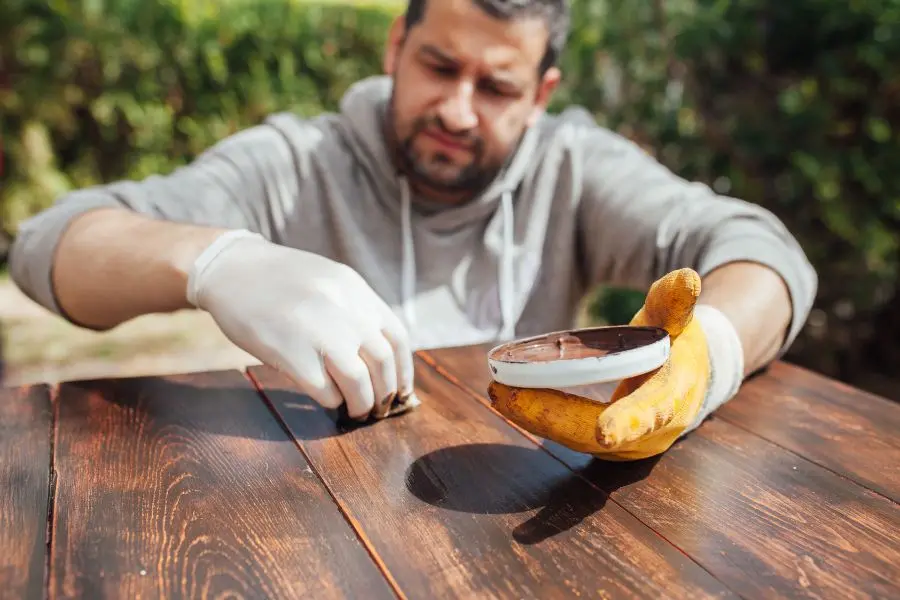
Protection is done internally as well as externally. When you apply wood waterproofing, you should apply all sides. Else insects will harm the surface. Due to this, water will penetrate inside and damage the wood suddenly.
The external damage can happen due to the sunlight and its UV lights. So suitable products should be applied on the surface. And also, for the outer decks and platforms, use abrasion resistance products like marine varnish. So when we use it, it will be protected although its surface is getting damaged.
Do not drill, cut, or saw on the surface, and do not apply more load as it cracks. So follow these steps to protect valuable woods from damage after applying the waterproofing. Else layer will be damaged, and water will penetrate inside.
Related Topics
